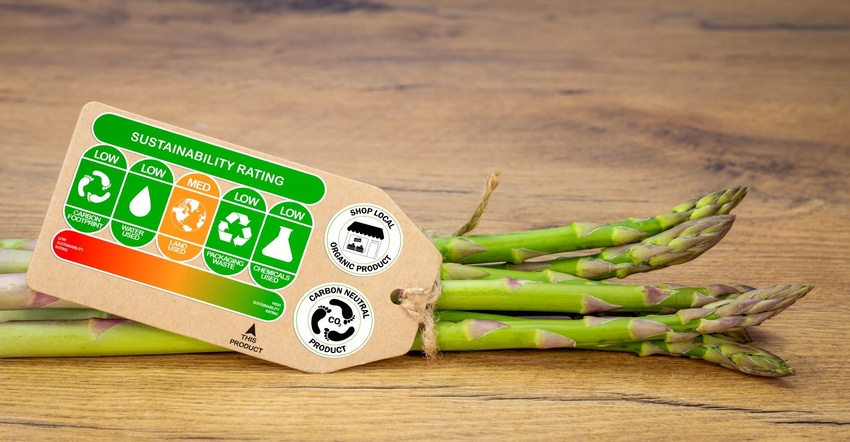Data-driven food & beverage CPGs lead in the sustainability era
More F&B brands are striving to create environmentally friendly products and sustainability initiatives, which is being driven by consumers, retailers and regulatory agencies alike.

The food and beverage industry has experienced a shift in demand to more sustainable product development. The move to create a more environmentally friendly portfolio is being driven by consumers, retailers and regulatory agencies, and sustainability commitments are now table stakes for gaining market share.
Some studies indicate brands with sustainable business practices are experiencing sales growth. According to a recent study by McKinsey & Co. and NielsenIQ, products making environmental, social and governance (ESG)-related claims averaged 28% cumulative growth from 2017 to 2022, versus 20% for products that did not have such claims.
As consumer demand has increased, so has regulatory pressure. The Securities and Exchange Commission (SEC) proposed a rule on climate-related disclosures for public companies that would include Scope 3 carbon emissions. Consider the impact on food companies, whose Scope 3 emissions comprise 87% of their total greenhouse gas emissions. The rule, if issued, would require brands to track and improve their overall carbon footprint and communicate those improvements to their retail partners and customers.
As a result of these growing demands, brands’ ESG strategies are now a leading driver in new product innovation. Many food businesses are making public commitments regarding their sustainability targets, including carbon reduction. Global brands such as Danone and Nestle have announced plans to significantly reduce their emissions by 2030. Grocery retailers like Ahold Delhaize in the Netherlands are also joining in on carbon reduction targets across their entire value chain.
R&D teams are being tasked with more complex sourcing decisions as they create new packaged goods and improve upon existing portfolios to meet these ESG goals. For the CPG industry, ingredient sourcing data can be a driver in shifting business practices to sustainable alternatives and successfully implementing ESG strategies. From the product research stage to on-pack labeling, brands who are leading with data in their sustainability goals are often better set up for success.
Ingredient data empowers innovation
As more organizations move toward sustainable business practices overall, new product innovation is where food and beverage brands can set themselves apart from the competition. There are many nuances for brands to consider with each of their ingredients such as water usage, greenhouse gas emissions, labor risk, animal welfare and land use, to name a few. Each ingredient contributes to the business’s environmental footprint, and the ability to source accurate, granular ingredient data at this stage allows teams to identify the high-risk ingredients and avoid carbon- or water-intensive activities in the process before mass production or even product testing begins.
Data is the answer to product transparency
As global efforts continue to address climate change concerns and the actions needed to combat its effects, regulators are now increasingly looking at the food and beverage industry’s impact. This has resulted in the proposed SEC climate disclosure rules. For brands operating outside the United States, reporting requirements extend overseas as well. The European Council advanced the Corporate Sustainability Reporting Directive (CSRD), a new requirement for all large companies in the EU to disclose regular reports on their environmental and social impact.
There could be little reprieve as the focus on climate action continues. Food and beverage executives may be held to a higher standard, no longer able to settle on generalized emissions data for their reporting. With increased attention on company impact, so will follow a need to source the kind of precise, ingredient-level carbon and water-usage data that is currently only considered by industry leaders but may become an industry standard. For those in the food and beverage space, getting ahead of these impending regulations offers an opportunity to not only emerge as leaders but also avoid costly risks down the line.
Data secures on-pack labeling claims and builds consumer loyalty
With an increase in brands leaning on various environmental claims to set themselves apart, scrutiny emerges as to which companies truly adhere to the practices behind the labels. Consumer class action lawsuits are also on the rise, as well as regulatory inquiries by FTC and the National Advertising Division (NAD) around deceptive advertising and greenwashing. The CPGs who lead with full data transparency and third-party, industry recognized methodology could be rewarded with trust and loyalty from consumers actively seeking more sustainable products.
Rachel Calomeni is the SVP of growth and innovation at HowGood, an independent research company with a large ingredient sustainability database for CPG food and beverage brands, foodservice, retailers and suppliers.
About the Author(s)
You May Also Like






